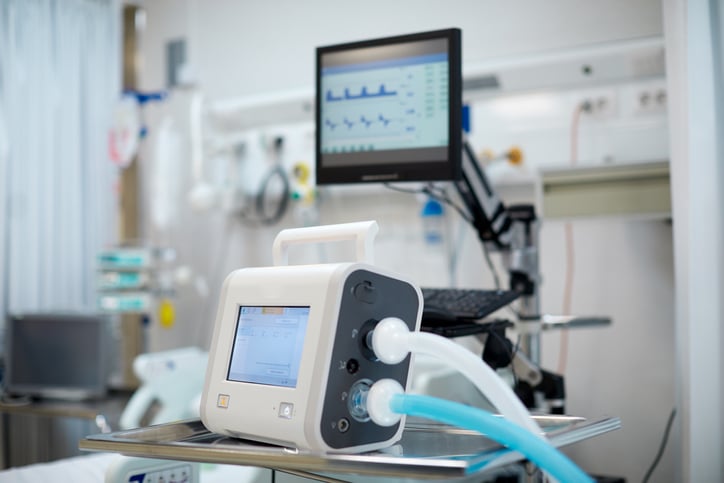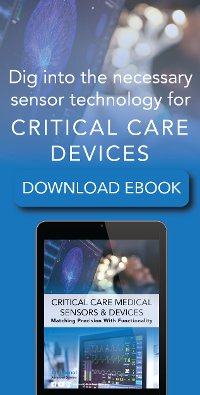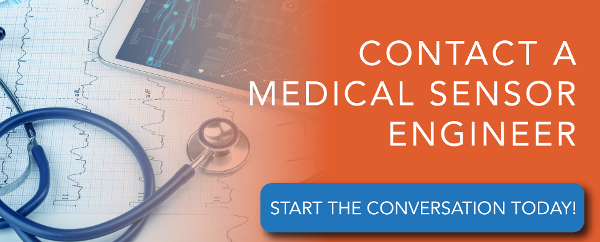Medical Pressure Sensors & the Critical Care Devices They Support

Critical care is often marked by how big things often are.
Patient conditions are among the most serious. Decisions by medical professionals providing care matter more. And the equipment used in treatment represents some of the latest strides in medical technology.
But as with most things in patient care, there's nothing bigger than the little things.
While medical pressure sensors may be one of the smaller components of the devices used in patient care, their performance and functionality has a big impact on outcomes.
There's nowhere this is more true than in critical care – where the stakes are among the highest and all elements of a device's performance matter as much as those using them.
5 Critical Care Devices & How Pressure Sensors Enhance Functionality
Next to a doctor or nurse, the devices used in critical care are the most important tools in ensuring a patient’s health and treatment. However, a device is only effective if its most sensitive & sophisticated components are functioning properly.
For certain applications, pressure sensors are that component. And in addition to making sure the device it's installed in is able to do its job, a pressure sensor can help the device – and the medical caregivers using it – do more for a patient.
Let's examine several medical applications for MEMS pressure sensors in critical care:
- Ventilators
- Catheters
- Dialysis machines
- Ablation machines
- Surgical assemblies
Ventilators
Whether invasive or non-invasive, ventilators require a high level of sophisticated feedback and monitoring to ensure a patient is getting the right amount of oxygen.
For those treating a patient, the pressure sensor in a ventilator is not only a means to ensure function, but also accuracy. In addition to measuring the pressure of the air or oxygen being delivered to a patient's lungs, the sensor can signal the device to make airflow adjustments. What's more, ventilator pressure sensors provide continuous feedback on the efficacy of the device, allowing caregivers to quickly respond and identify potential problems before they become critical issues.
Smart medical pressure sensors take things a step further. When connected to a user interface, these sensors can provide physicians with the same real-time data remotely.
Catheters
Representing a diverse category of medical devices, catheters are used to diagnose and treat a variety of medical conditions ranging from urinary tract infections to cardiovascular issues. As catheters are some of the smallest medical devices, they’re often outfitted with miniature pressure sensors.
In many cases, catheters serve double duty, as they’re also used to measure pressure inside the body, such as blood pressure, intracranial pressure, or intraocular pressure. This is especially useful in long-term applications, reducing the need for additional medical devices for treating a patient.
Dialysis Machines
Pressure sensors detect fluctuations in pressure that could indicate problems with the system, such as improper functioning or blockages, and alert staff of potential issues so they can take corrective action quickly. Additionally, the pressure sensor helps maintain consistency in the concentration of the dialysate solution during a treatment session, which can be critical for some patients.
Ablation Machines
A medical procedure requiring absolute precision, ablation treats a variety of conditions – most notably cardiac arrhythmias and cancer. Ablation machines use either radiofrequency energy, lasers, or cryoenergy to precisely target and destroy diseased tissue.
During an ablation procedure, an integrated MEMS medical pressure sensor is used to monitor the pressure inside the body at the site of the ablation. This is important because the pressure can affect the effectiveness and safety of the procedure. For example, if the pressure is too high, it can cause tissue damage or other complications, while if the pressure is too low, it may not be effective in treating the target tissue.
Surgical Assemblies
Surgical sensors for pressure are used in assemblies to monitor various physiological parameters, such as blood pressure and intraocular pressure.
During surgical procedures, pressure sensors in surgical assemblies can help identify potential complications or adverse events, such as:
- Hemorrhages
- Hypotension
- Hypercapnia
Pressure Sensor Considerations for Critical Care Device Integration
As with any other medical device used in patient care and its components, selecting a pressure sensor for critical care equipment requires extreme evaluation of the device's performance and efficacy.
Your checklist should always include looking at:
- Accuracy: The sensor must be designed to provide accurate measurements within a required range, taking into account the environmental factors that can affect the measurement accuracy.
- Response Time: Medical devices require sensors with a fast response time to provide real-time data to healthcare professionals.
- Sensitivity: Even the smallest change in pressure can have big effects on a patient. The sensitivity of the pressure sensor determines the smallest pressure change that it can detect. Medical devices require highly sensitive sensors to detect small changes in pressure.
- Signal-to-Noise Ratio: Signal-to-noise ratio (SNR) is a measure of the quality of the output signal from a pressure sensor relative to the amount of unwanted variation or interference (noise) in the signal. A high SNR indicates a strong and reliable signal, while a low SNR can lead to inaccurate pressure measurements.
- Device Compatibility: This takes several forms – size, shape, output, power requirements, etc. In short, the sensor must be able to actually work with the device.
- Biocompatibility: The pressure sensor must be designed to be biocompatible, meaning that it does not cause an adverse reaction when it comes into contact with the human body. This is especially important for sensors that will be implanted or used in direct contact with bodily fluids.
- Power Consumption: Medical devices typically have limited power resources. The pressure sensor must be designed to operate within available power thresholds.
The Critical Need for Custom Medical Sensors in Critical Care Devices
For critical care medical devices, having the right sensors in place is essential to ensure accurate and reliable operation.
When it comes to pressure sensors used in critical care, oftentimes a standard off-the-shelf sensor isn't enough. Rather, using custom-designed pressure sensors has many distinct advantages that are hard to ignore.
- The specific requirements of critical care devices are often unique and complex, and off-the-shelf sensors may not meet these needs. A custom-designed sensor can be tailored to the specific needs of the device, ensuring that it performs optimally in the intended application.
- Critical care devices often require high accuracy and precision in their measurements, particularly when monitoring vital signs such as blood pressure or respiratory rate. A custom-designed pressure sensor can be optimized to achieve the required accuracy and precision. It can also be calibrated to ensure ongoing accuracy during a long, useful life.
- The materials and components used in a custom-designed sensor are carefully selected to ensure compatibility with the intended application. This is particularly important in critical care devices, where the sensor may be in contact with sensitive tissue or fluids. A custom-designed sensor can be made from biocompatible materials and designed to minimize the risk of infection or other complications.
- Custom-designed pressure sensors can be integrated more seamlessly into the critical care device, reducing the risk of errors or malfunctions. Especially in critical care, even small errors or delays can have serious consequences for patient outcomes.
Medical Pressure Sensors for Optimized Patient Care
Though small in size, custom medical pressure sensors play an integral role in ensuring the efficacy of many devices used in critical care. From ventilators to catheters, dialysis machines to surgical assemblies, custom pressure sensors help monitor and regulate key parameters that impact patient outcomes.





